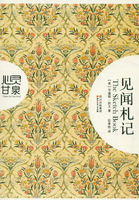In the fifteenth century, Paris was still divided into three wholly distinct and separate towns, each having its own physiognomy, its own specialty, its manners, customs, privileges, and history:the City, the University, the Town. The City, which occupied the island, was the most ancient, the smallest, and the mother of the other two, crowded in between them like a little old woman between two large and handsome maidens.The University covered the left bank of the Seine, from the Tournelle to the Tour de Nesle, points which correspond in the Paris of to-day, the one to the wine market, the other to the mint.Its wall included a large part of that plain where Julian had built his hot baths.The hill of Sainte-Geneviève was enclosed in it.The culminating point of this sweep of walls was the Papal gate, that is to say, near the present site of the Pantheon.The Town, which was the largest of the three fragments of Paris, held the right bank.Its quay, broken or interrupted in many places, ran along the Seine, from the Tour de Billy to the Tour du Bois; that is to say, from the place where the granary stands to-day, to the present site of the Tuileries.These four points, where the Seine intersected the wall of the capital, the Tournelle and the Tour de Nesle on the right, the Tour de Billy and the Tour du Bois on the left, were called pre-eminently, “the four towers of Paris.”The Town encroached still more extensively upon the fields than the University.The culminating point of the Town wall was at the gates of Saint-Denis and Saint-Martin, whose situation has not been changed.
As we have just said, each of these three great divisions of Paris was a town, but too special a town to be complete, a city which could not get along without the other two. Hence three entirely distinct aspects:churches abounded in the City; palaces, in the Town; and colleges, in the University.Neglecting here the originalities, of secondary importance in old Paris, and the capricious regulations regarding the public highways, we will say, from a general point of view, taking only masses and the whole group, in this chaos of communal jurisdictions, that the island belonged to the bishop, the right bank to the provost of the merchants, the left bank to the Rector; over all ruled the provost of Paris, a royal not a municipal official.The City had Notre-Dame; the Town, the Louvre and the H?tel de Ville; the University, the Sorbonne.The Town had the markets; the city, the Hospital; the University, the Préaux-Clercs.Offences committed by the scholars on the left bank were tried in the law courts on the island, and were punished on the right bank at Montfaucon; unless the rector, feeling the university to be strong and the king weak, intervened; for it was the students'privilege to be hanged on their own grounds.
The greater part of these privileges, it may be noted in passing, and there were some even better than the above, had been extorted from the kings by revolts and mutinies. It is the course of things from time immemorial; the king only lets go when the people tear away.There is an old charter which puts the matter naively:apropos of fidelity:Civibus fidelitas in reges, quae tamen aliquoties seditionibus interrupta, multa peperit privilegia.
In the fifteenth century, the Seine bathed five islands within the walls of Paris:Louviers island, where there were then trees, and where there is no longer anything but wood; l'ile aux Vaches, and l'ile Notre-Dame, both deserted, with the exception of one house, both fiefs of the bishop—in the seventeenth century, a single island was formed out of these two, which was built upon and named l'ile Saint-Louis—, lastly the City, and at its point, the little islet of the cow tender, which was afterwards engulfed beneath the platform of the Pont-Neuf. The City then had five bridges:three on the right, the Pont Notre-Dame, and the Pont au Change, of stone, the Pont aux Meuniers, of wood; two on the left, the Petit Pont, of stone, the Pont Saint-Michel, of wood; all loaded with houses.
The University had six gates, built by Philip Augustus; there were, beginning with la Tournelle, the Porte Saint-Victor, the Porte Bordelle, the Porte Papale, the Porte Saint-Jacques, the Porte Saint-Michel, the Porte Saint-Germain.The Town had six gates, built by Charles V.; beginning with the Tour de Billy they were:the Porte Saint-Antoine, the Porte du Temple, the Porte Saint-Martin, the Porte Saint-Denis, the Porte Montmartre, the Porte Saint-Honor?All these gates were strong, and also handsome, which does not detract from strength.A large, deep moat, with a brisk current during the high water of winter, bathed the base of the wall round Paris; the Seine furnished the water.At night, the gates were shut, the river was barred at both ends of the city with huge iron chains, and Paris slept tranquilly.
From a bird's-eye view, these three burgs, the City, the Town, and the University, each presented to the eye an inextricable skein of eccentrically tangled streets. Nevertheless, at first sight, one recognized the fact that these three fragments formed but one body.One immediately perceived three long parallel streets, unbroken, undisturbed, traversing, almost in a straight line, all three cities, from one end to the other; from North to South, perpendicularly, to the Seine, which bound them together, mingled them, infused them in each other, poured and transfused the people incessantly, from one to the other, and made one out of the three.The first of these streets ran from the Porte Saint-Martin:it was called the Rue Saint-Jacques in the University, Rue de la Juiverie in the City, Rue Saint-Martin in the Town; it crossed the water twice, under the name of the Petit Pont and the Pont Notre-Dame.The second, which was called the Rue de la Harpe on the left bank, Rue de la Barilleri?in the island, Rue Saint-Denis on the right bank, Pont Saint-Michel on one arm of the Seine, Pont au Change on the other, ran from the Porte Saint-Michel in the University, to the Porte Saint-Denis in the Town.However, under all these names, there were but two streets, parent streets, generating streets, —the two arteries of Paris.All the other veins of the triple city either derived their supply from them or emptied into them.
Independently of these two principal streets, piercing Paris diametrically in its whole breadth, from side to side, common to the entire capital, the City and the University had also each its own great special street, which ran lengthwise by them, parallel to the Seine, cutting, as it passed, at right angles, the two arterial thoroughfares. Thus, in the Town, one descended in a straight line from the Porte Saint-Antoine to the Porte Saint-Honor?in the University from the Porte Saint-Victor to the Porte Saint-Germain.These two great thoroughfares intersected by the two first, formed the canvas upon which reposed, knotted and crowded together on every hand, the labyrinthine network of the streets of Paris.In the incomprehensible plan of these streets, one distinguished likewise, on looking attentively, two clusters of great streets, like magnified sheaves of grain, one in the University, the other in the Town, which spread out gradually from the bridges to the gates.
Some traces of this geometrical plan still exist to-day.
Now, what aspect did this whole present, when, as viewed from the summit of the towers of Notre-Dame, in 1482?That we shall try to describe.
For the spectator who arrived, panting, upon that pinnacle, it was first a dazzling confusing view of roofs, chimneys, streets, bridges, places, spires, bell towers. Everything struck your eye at once:the carved gable, the pointed roof, the turrets suspended at the angles of the walls; the stone pyramids of the eleventh century, the slate obelisks of the fifteenth; the round, bare tower of the donjon keep; the square and fretted tower of the church; the great and the little, the massive and the aerial.The eye was, for a long time, wholly lost in this labyrinth, where there was nothing which did not possess its originality, its reason, its genius, its beauty, —nothing which did not proceed from art; beginning with the smallest house, with its painted and carved front, with external beams, elliptical door, with projecting stories, to the royal Louvre, which then had a colonnade of towers.But these are the principal masses which were then to be distinguished when the eye began to accustom itself to this tumult of edifices.
In the first place, the City.—“The island of the City, ”as Sauval says, who, in spite of his confused medley, sometimes has such happy turns of expression, —“the island of the city is made like a great ship, stuck in the mud and run aground in the current, near the centre of the Seine.”
We have just explained that, in the fifteenth century, this ship was anchored to the two banks of the river by five bridges. This form of a ship had also struck the heraldic scribes; for it is from that, and not from the siege by the Normans, that the ship which blazons the old shield of Paris, comes, according to Favyn and Pasquier.For him who understands how to decipher them, armorial bearings are algebra, armorial bearings have a tongue.The whole history of the second half of the Middle Ages is written in armorial bearings, —the first half is in the symbolism of the Roman churches.They are the hieroglyphics of feudalism, succeeding those of theocracy.
Thus the City first presented itself to the eye, with its stern to the east, and its prow to the west.Turning towards the prow, one had before one an innumerable flock of ancient roofs, over which arched broadly the lead-covered apse of the Sainte-Chapelle, like an elephant's haunches loaded with its tower. Only here, this tower was the most audacious, the most open, the most ornamented spire of cabinet-maker's work that ever let the sky peep through its cone of lace.In front of Notre-Dame, and very near at hand, three streets opened into the cathedral square, —a fine square, lined with ancient houses.Over the south side of this place bent the wrinkled and sullen front of the H?tel Dieu, and its roof, which seemed covered with warts and pustules.Then, on the right and the left, to east and west, within that wall of the City, which was yet so contracted, rose the bell towers of its one and twenty churches, of every date, of every form, of every size, from the low and wormeaten belfry of Saint-Denis du Pas to the slender needles of Saint-Pierre aux Boeufs and Saint-Landry.
Behind Notre-Dame, the cloister and its Gothic galleries spread out towards the north; on the south, the half-Roman palace of the bishop; on the east, the desert point of the Terrain. In this throng of houses the eye also distinguished, by the lofty open-work mitres of stone which then crowned the roof itself, even the most elevated windows of the palace, the H?tel given by the city, under Charles VI., to Juvénal des Ursins; a little farther on, the pitch-covered sheds of the Palus Market; in still another quarter the new apse of Saint-Germain le Vieux, lengthened in 1458, with a bit of the Rue aux Febves; and then, in places, a square crowded with people; a pillory, erected at the corner of a street; a fine fragment of the pavement of Philip Augustus, a magnificent flagging, grooved for the horses'feet, in the middle of the road, and so badly replaced in the sixteenth century by the miserable cobblestones, called the“pavement of the League; ”a deserted back courtyard, with one of those diaphanous staircase turrets, such as were erected in the fifteenth century, one of which is still to be seen in the Rue des Bourdonnais.Lastly, at the right of the Sainte-Chapelle, towards the west, the Palais de Justice rested its group of towers at the edge of the water.The thickets of the king's gardens, which covered the western point of the City, masked the Island du Passeur.As for the water, from the summit of the towers of Notre-Dame one hardly saw it, on either side of the City; the Seine was hidden by bridges, the bridges by houses.
And when the glance passed these bridges, whose roofs were visibly green, rendered mouldy before their time by the vapors from the water, if it was directed to the left, towards the University, the first edifice which struck it was a large, low sheaf of towers, the Petit-Chatelet, whose yawning gate devoured the end of the Petit-Pont.Then, if your view ran along the bank, from east to west, from the Tournelle to the Tour de Nesle, there was a long cordon of houses, with carved beams, stained-glass windows, each story projecting over that beneath it, an interminable zigzag of bourgeois gables, frequently interrupted by the mouth of a street, and from time to time also by the front or angle of a huge stone mansion, planted at its ease, with courts and gardens, wings and detached buildings, amid this populace of crowded and narrow houses, like a grand gentleman among a throng of rustics.There were five or six of these mansions on the quay, from the house of Lorraine, which shared with the Bernardins the grand enclosure adjoining the Tournelle, to the H?tel de Nesle, whose principal tower ended Paris, and whose pointed roofs were in a position, during three months of the year, to encroach, with their black triangles, upon the scarlet disk of the setting sun.
This side of the Seine was, however, the least mercantile of the two. Students furnished more of a crowd and more noise there than artisans, and there was not, properly speaking, any quay, except from the Pont Saint-Michel to the Tour de Nesle.The rest of the bank of the Seine was now a naked strand, the same as beyond the Bernardins; again, a throng of houses, standing with their feet in the water, as between the two bridges.
There was a great uproar of laundresses; they screamed, and talked, and sang from morning till night along the beach, and beat a great deal of linen there, just as in our day. This is not the least of the gayeties of Paris.
The University presented a dense mass to the eye. From one end to the other, it was homogeneous and compact.The thousand roofs, dense, angular, clinging to each other, composed, nearly all, of the same geometrical element, offered, when viewed from above, the aspect of a crystallization of the same substance.
The capricious ravine of streets did not cut this block of houses into too disproportionate slices.The forty-two colleges were scattered about in a fairly equal manner, and there were some everywhere.The amusingly varied crests of these beautiful edifices were the product of the same art as the simple roofs which they overshot, and were, actually, only a multiplication of the square or the cube of the same geometrical figure. Hence they complicated the whole effect, without disturbing it; completed, without overloading it.Geometry is harmony.Some fine mansions here and there made magnificent outlines against the picturesque attics of the left bank.The house of Nevers, the house of Rome, the house of Reims, which have disappeared; the H?tel de Cluny, which still exists, for the consolation of the artist, and whose tower was so stupidly deprived of its crown a few years ago.Close to Cluny, that Roman palace, with fine round arches, were once the hot baths of Julian.There were a great many abbeys, of a beauty more devout, of a grandeur more solemn than the mansions, but not less beautiful, not less grand.Those which first caught the eye were the Bernardins, with their three bell towers; Sainte-Geneviève, whose square tower, which still exists, makes us regret the rest; the Sorbonne, half college, half monastery, of which so admirable a nave survives; the fine quadrilateral cloister of the Mathurins; its neighbor, the cloister of Saint-Benoit, within whose walls they have had time to cobble up a theatre, between the seventh and eighth editions of this book; the Cordeliers, with their three enormous adjacent gables; the Augustins, whose graceful spire formed, after the Tour de Nesle, the second denticulation on this side of Paris, starting from the west.The colleges, which are, in fact, the intermediate ring between the cloister and the world, hold the middle position in the monumental series between the H?tels and the abbeys, with a severity full of elegance, sculpture less giddy than the palaces, an architecture less severe than the convents.Unfortunately, hardly anything remains of these monuments, where Gothic art combined with so just a balance, richness and economy.The churches, the churches dominated the whole; and, like one harmony more in this mass of harmonies, they pierced in quick succession the multiple open work of the gables with slashed spires, with open-work bell towers, with slender pinnacles, whose line was also only a magnificent exaggeration of the acute angle of the roofs.
The ground of the University was hilly; Mount Sainte-Geneviève formed an enormous mound to the south; and it was a sight to see from the summit of Notre-Dame how that throng of narrow and tortuous streets, those bunches of houses which, spread out in every direction from the top of this eminence, precipitated themselves in disorder, and almost perpendicularly down its flanks, nearly to the water's edge, having the air, some of falling, others of clambering up again, and all of holding to one another.A continual flux of a thousand black points which passed each other on the pavements made everything move before the eyes; it was the populace seen thus from aloft and afar.
Lastly, in the intervals of these roofs, of these spires, of these accidents of numberless edifices, which bent and writhed, and jagged in so eccentric a manner the extreme line of the University, one caught a glimpse, here and there, of a great expanse of moss-grown wall, a thick, round tower, a crenellated city gate, shadowing forth the fortress; it was the wall of Philip Augustus.Beyond, the fields gleamed green; beyond, fled the roads, along which were scattered a few more suburban houses, which became more infrequent as they became more distant.Some of these faubourgs were important:there were, first, starting from la Tournelle, the Bourg Saint-Victor, with its one arch bridge over the Bievre, its abbey where one could read the epitaph of Louis le Gros, epitaphium Ludovici Grossi, and its church with an octagonal spire, flanked with four little bell towers of the eleventh century; next, the Bourg Saint-Marceau, which already had three churches and one convent; then, leaving the mill of the Gobelins and its four white walls on the left, there was the Faubourg Saint-Jacques with the beautiful carved cross in its square; the church of Saint-Jacques du Haut-Pas, which was then Gothic, pointed, charming; Saint-Magloire, a fine nave of the fourteenth century, which Napoleon turned into a hayloft; Notre-Dame des Champs, where there were Byzantine mosaics; lastly, after having left behind, full in the country, the Monastery des Chartreux, a rich edifice contemporary with the Palais de Justice, with its little garden divided into compartments, and the haunted ruins of Vauvert, the eye fell, to the west, upon the three Roman spires of Saint-Germain des Prés.The Bourg Saint-Germain, already a large community, formed fifteen or twenty streets in the rear; the pointed bell tower of Saint-Sulpice marked one corner of the town.Close beside it one descried the quadrilateral enclosure of the fair of Saint-Germain, where the market is situated to-day; then the abbot's pillory, a pretty little round tower, well capped with a leaden cone; the brickyard was further on, and the Rue du Four, which led to the common bakehouse, and the mill on its hillock, and the lazar house, a tiny house, isolated and half seen.
But that which attracted the eye most of all, and fixed it for a long time on that point, was the abbey itself. It is certain that this monastery, which had a grand air, both as a church and as a seignory; that abbatial palace, where the bishops of Paris counted themselves happy if they could pass the night; that refectory, upon which the architect had bestowed the air, the beauty, and the rose window of a cathedral; that elegant chapel of the Virgin; that monumental dormitory; those vast gardens; that portcullis; that drawbridge; that envelope of battlements which notched to the eye the verdure of the surrounding meadows; those courtyards, where gleamed men at arms, intermingled with golden copes; —the whole grouped and clustered about three lofty spires, with round arches, well planted upon a Gothic apse, made a magnificent figure against the horizon.
When, at length, after having contemplated the University for a long time, you turned towards the right bank, towards the Town, the character of the spectacle was abruptly altered. The Town, in fact much larger than the University, was also less of a unit.At the first glance, one saw that it was divided into many masses, singularly distinct.First, to the eastward, in that part of the town which still takes its name from the marsh where Camulogenes entangled Caesar, was a pile of palaces.The block extended to the very water's edge.Four almost contiguous H?tels, Jouy, Sens, Barbeau, the house of the Queen, mirrored their slate peaks, broken with slender turrets, in the Seine.
These four edifices filled the space from the Rue des Nonaindières, to the abbey of the Celestins, whose spire gracefully relieved their line of gables and battlements.A few miserable, greenish hovels, hanging over the water in front of these sumptuous Hètels, did not prevent one from seeing the fine angles of their fa?ades, their large, square windows with stone mullions, their pointed porches overloaded with statues, the vivid outlines of their walls, always clear cut, and all those charming accidents of architecture, which cause Gothic art to have the air of beginning its combinations afresh with every monument.
Behind these palaces, extended in all directions, now broken, fenced in, battlemented like a citadel, now veiled by great trees like a Carthusian convent, the immense and multiform enclosure of that miraculous H?tel de Saint-Pol, where the King of France possessed the means of lodging superbly two and twenty princes of the rank of the dauphin and the Duke of Burgundy, with their domestics and their suites, without counting the great lords, and the emperor when he came to view Paris, and the lions, who had their separate H?tel at the royal H?tel.Let us say here that a prince's apartment was then composed of never less than eleven large rooms, from the chamber of state to the oratory, not to mention the galleries, baths, vapor-baths, and other“superfluous places, ”with which each apartment was provided; not to mention the private gardens for each of the king's guests; not to mention the kitchens, the cellars, the domestic offices, the general refectories of the house, the poultry-yards, where there were twenty-two general laboratories, from the bakehouses to the wine-cellars; games of a thousand sorts, malls, tennis, and riding at the ring; aviaries, fishponds, menageries, stables, barns, libraries, arsenals and foundries.This was what a king's palace, a Louvre, a H?tel de Saint-Pol was then.A city within a city.















